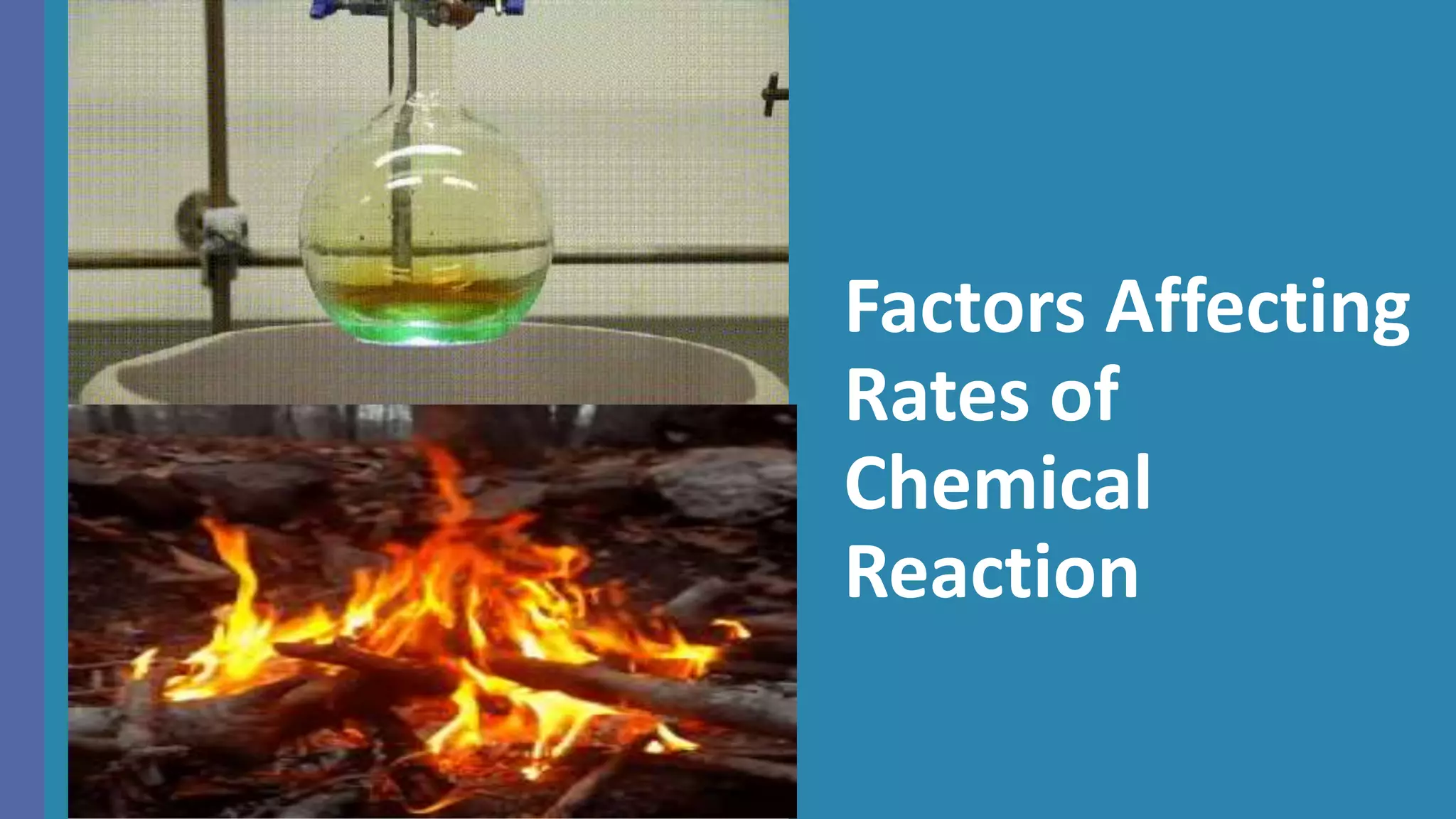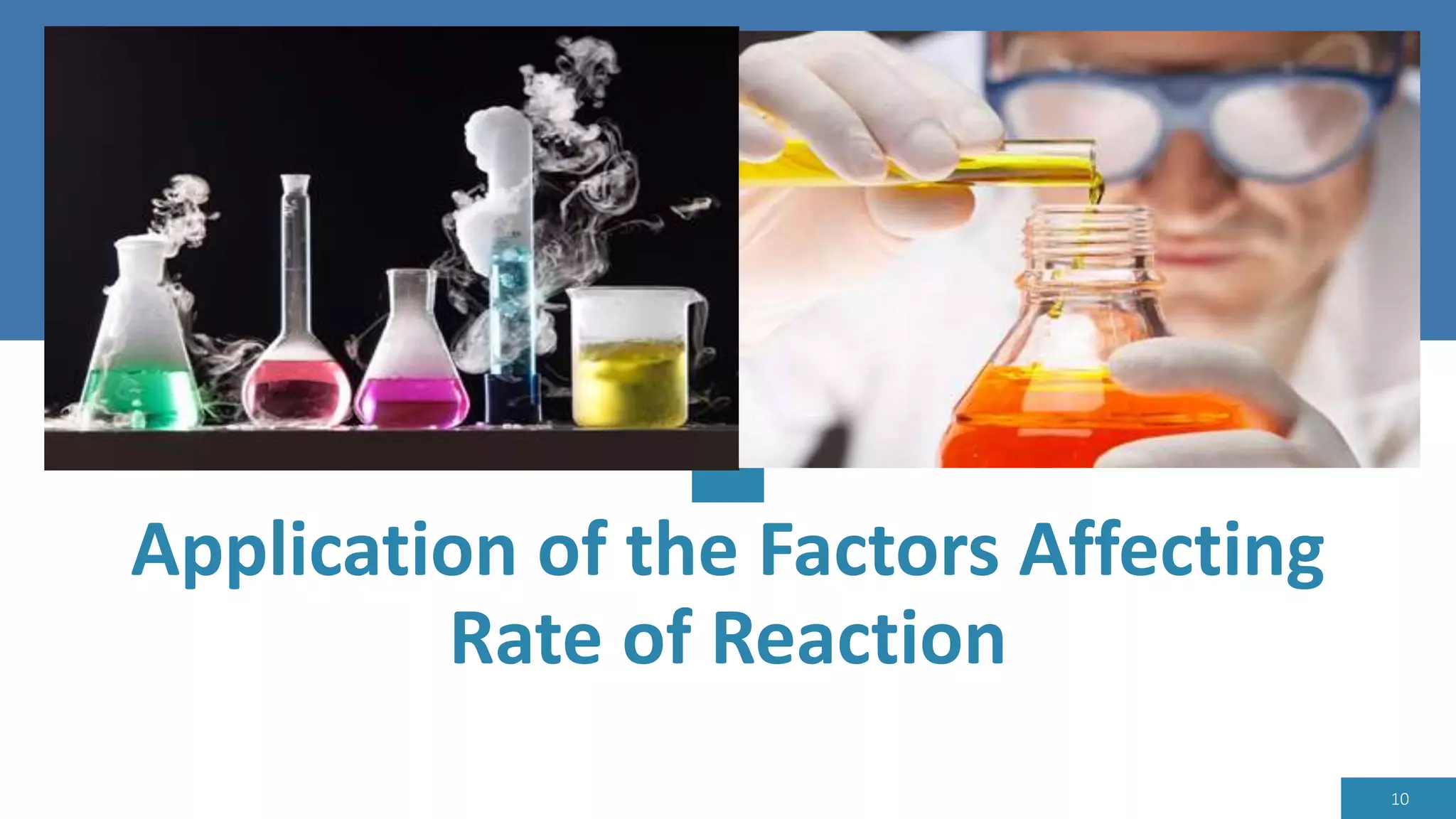The document discusses five key factors that affect the rate of chemical reactions: temperature, concentration, surface area, the presence of catalysts, and the nature of the reactants. It provides examples of how increasing temperature, concentration, or surface area can increase the collision rate of reactant particles and therefore increase the reaction rate. Catalysts are described as substances that lower the activation energy and speed up reactions without being used up. Several applications are discussed, including how controlling factors like temperature and concentration can preserve foods and pharmaceuticals or artifacts.













